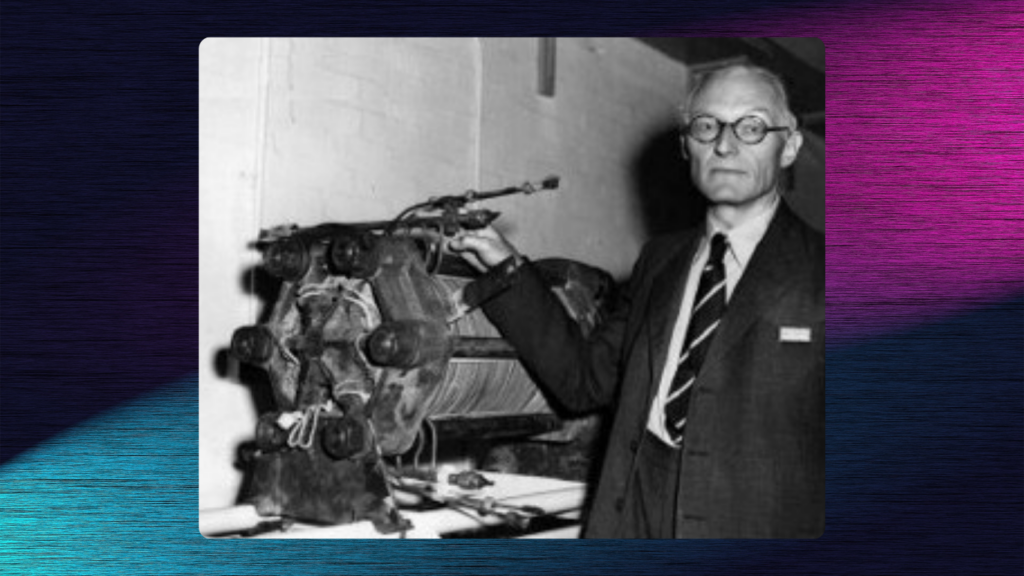Francis Thomas Bacon, an Essex-born scholar from Cambridge, crafted a revolutionary clean energy source nearly seven decades ago, which played a pivotal role in the first moon landing and reshaped technological history. Despite the significance of his achievements, Bacon remains relatively unrecognized. He created the first operational hydrogen-oxygen fuel cell, crucial for propelling Apollo 11 to the moon, and his work continues to inspire contemporary research in sustainable energy.

In an effort to recognize Bacon’s substantial contributions, the charity Cambridge Past, Present & Future is planning to commemorate him with a blue plaque at his old home in Little Shelford, Cambridgeshire. NASA honored him by naming these pivotal fuel cells “Bacon Cells,” which provided essential backup power during the Apollo missions, energizing onboard systems and producing potable water from the electricity generation byproducts.
Bacon explained in a 1969 BBC Radio 4 interview that the device could generate power indefinitely as long as hydrogen and oxygen were supplied and the resultant water removed. This mechanism not only met the spacecraft’s operational needs but also supplied the astronauts with essential drinking water.
President Richard Nixon acknowledged the critical nature of Bacon’s contribution by stating, “Without you, Tom, we wouldn’t have gotten to the moon.”
Professor Sam Stranks, an expert in energy materials at Cambridge University, regards Bacon as a pioneer whose advancements in fuel cell technology were indispensable for space exploration. “The ability to generate continuous electricity in space, where traditional power sources are inadequate, highlights the importance of his innovation,” Stranks remarked.
Today, Bacon’s legacy continues to propel advancements in solar energy, hydrogen production, and energy storage solutions. According to Stranks, fuel cells are still highly relevant today, offering solutions for generating eco-friendly electricity and emergency power in isolated locations. These cells might soon power heavy-duty vehicles, circumventing the limitations of large, heavy rechargeable batteries—a vision that Bacon foresaw.
“In a modified form, it is going to come,” Bacon anticipated during his lifetime, predicting broader applications for his technology.
Stranks describes him as “a visionary and an unsung hero,” whose early work on the fuel cell presaged today’s clean energy efforts.
After graduating from Cambridge in the early 1930s, Bacon was inspired by William Grove, who first posited the theory of fuel cells in the 19th century. Bacon embarked on risky experiments with volatile gases, eventually leaving his job to dedicate his life to refining this technology, first at Cambridge University and then at the local Marshall engineering firm.
His perseverance paid off when NASA chose to use his alkaline fuel cell for their lunar missions in 1962, which led to significant investment.
Professor Clemens Kaminski, head of the Department of Chemical Engineering and Biotechnology at Cambridge, where Bacon once worked, noted, “British engineers often conceive brilliant innovations that don’t always succeed commercially. Bacon faced this challenge but continued his efforts.”
After their moon landing, astronauts Neil Armstrong, Buzz Aldrin, and Michael Collins personally met Bacon in London, giving him a signed photograph of Armstrong’s iconic first steps on the moon.
Although he passed away in 1992, Bacon’s modesty and dedication to problem-solving have left a profound, albeit understated, legacy. Kaminski believes it might be another 20 or 30 years before Bacon’s contributions are fully appreciated. “If we solve the challenges of producing and storing hydrogen sustainably and efficiently, the fuel cell could transform everyday life significantly.”

Subtly charming pop culture geek. Amateur analyst. Freelance tv buff. Coffee lover
